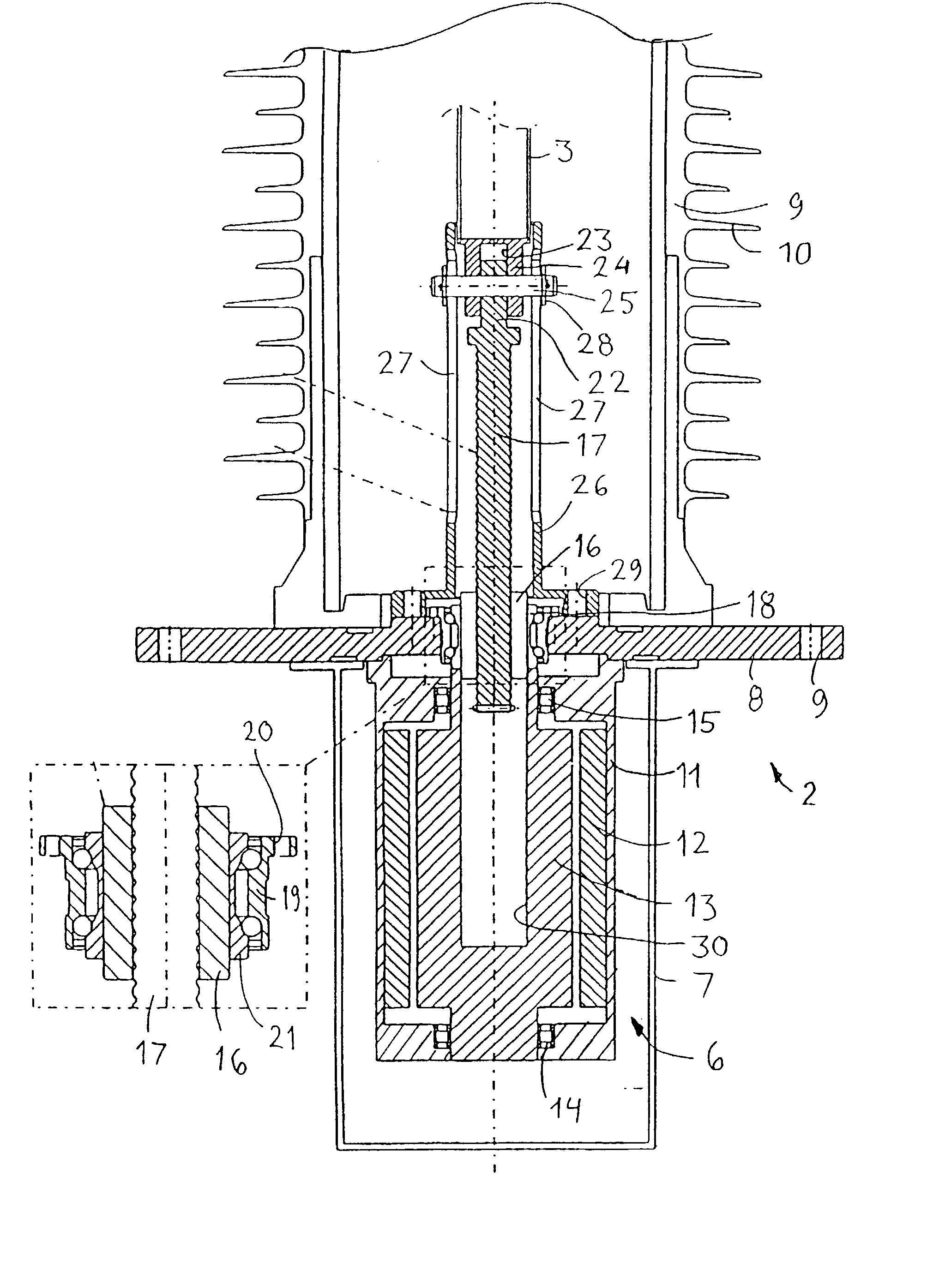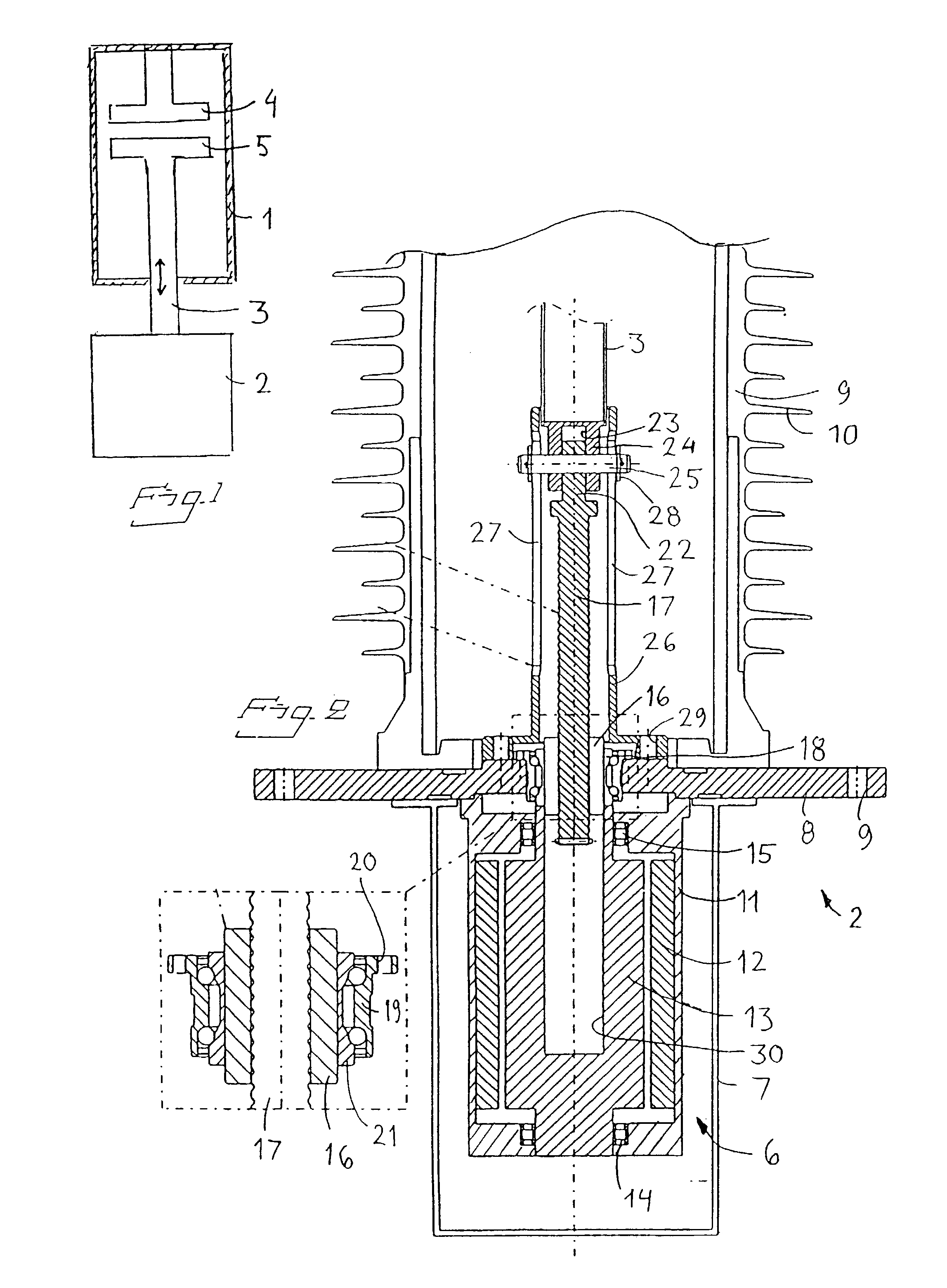Electric circuit breaker, as well as plant, use and method where such is used
a circuit breaker and electric circuit technology, applied in the direction of air breakers, electronic commutation motor control, high-tension/heavy-dress switches, etc., can solve the problems of poor precision of spring-loaded operating devices, inability to tailor the movement of mobile contacts, and inability to control movement speed or acceleration
- Summary
- Abstract
- Description
- Claims
- Application Information
AI Technical Summary
Benefits of technology
Problems solved by technology
Method used
Image
Examples
Embodiment Construction
[0036] FIG. 1 schematically illustrates the principle of an electric circuit breaker. It consists of a breaker chamber 1, an operating means 2 and an operating rod 3. A stationary contact 4 and a mobile contact 5 are arranged in the breaker chamber. Each of the contacts is electrically connected to a separate line. In normal conditions, the contacts 4, 5 are in contact with one another, and current is conducted from one line to the other line through the circuit breaker. When the current must be broken for some reason, e.g. because of short-circuit currents caused by a fault, the mobile contact 5 is rapidly withdrawn from the stationary contact 4. An arc initially develops between the contacts and is extinguished by a flow of insulating gas shortly after the contacts have separated. When the current is subsequently closed, the mobile contact 5 is again forced into contact with the stationary contact 4. Breaking and closing can be manual or automatic. Turning the circuit breaker ON a...
PUM
 Login to View More
Login to View More Abstract
Description
Claims
Application Information
 Login to View More
Login to View More - R&D
- Intellectual Property
- Life Sciences
- Materials
- Tech Scout
- Unparalleled Data Quality
- Higher Quality Content
- 60% Fewer Hallucinations
Browse by: Latest US Patents, China's latest patents, Technical Efficacy Thesaurus, Application Domain, Technology Topic, Popular Technical Reports.
© 2025 PatSnap. All rights reserved.Legal|Privacy policy|Modern Slavery Act Transparency Statement|Sitemap|About US| Contact US: help@patsnap.com



